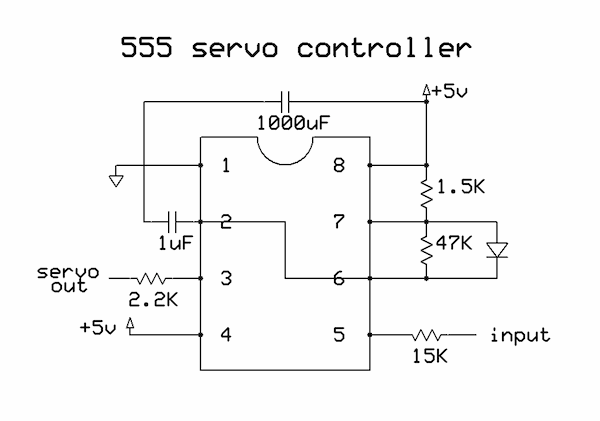
To mark the recent passing of Hans Camenzind, we are running a 555 mini-retrospective this week. Last year Jeri Ellsworth held a 555 timer contest in the categories of Artistic, Complex, Minimalist, and Utility. Here are some photos and schematics of the first place winners from that contest.
First Place “Artistic” – Randy Elwin — Le Dominoux
From Randy’s site:
Le Dominoux are “LED dominoes”, a blinking LED that propagates from device to device. Each Dominoux comprises a coin cell-powered 555 timer circuit configured as a one-shot, triggered either by a photo transistor or CdS photocell. Using a bunch of Dominoux enables creating various lighting patterns, trains, and continuous loops. Other Dominoux variants are the basic blinky for generating light pulses, and a tone generator for making annoying beeps.
First Place “Complex” – Alan Yates — 555 Adding Machine
The 555 Adding Machine is a decimal adding machine built using 102 LM555s. It can perform addition and subtraction with optional carry-around, and is controlled by an old rotary phone dialer. Check out Alan’s site for more pics of the electronic guts soldered to rails in the back of the machine in free-form style.
First Place “Minimalist” – Tom Jenner — 555 Servo Controller
Tom’s entry for the contest has a twist in it: he created an educational video series on how to use the 555 as a servo controller in a variety of capacities. By starting from the basic schematic above, he expands on the servo controller by creating such devices as a light sensor, ball smacker, chaotic walker, dynamic rover, and even a self-balancing robot.
First Place “Utility” – Michael Davis — Battery Charge Controller for Wind And Solar
Michael has a remote, off-grid property along with lots of experience in wind and solar energy setups. Charge controllers for these systems have been around for a while, and monitor when battery voltages are too low or high, then switches them on and off accordingly. The problem for the average DIYer is that building one’s own charge controller can tend to be a bit too high of a learning curve. With this in mind, Michael noticed that the 555 has an internal structure that could eliminate seven components from a standard charge controller circuit, greatly simplifying the design.
ADVERTISEMENT














